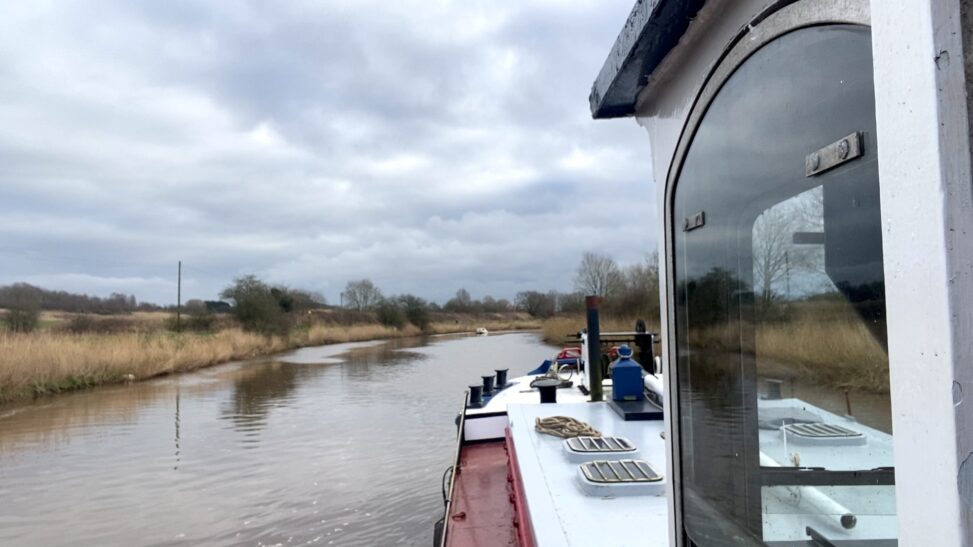I’ve been around boats for most of my life (I was 7 when we had our first holiday on a canal boat) but Iris is VERY different to anything I’ve handled before, so moving her for the first time was always going to be a big moment. For a start she is two and a half times the weight of Bream. She is also steered with a wheel, from a position very high up, towards the centre of the boat.
Then there is the engine. I’d never even seen a compressed air start engine, let alone used one until setting foot on this boat. Matt had been incredibly helpful, talking me through the process during handover, while I shot video which I then turned into a guide which was printed and laminated.
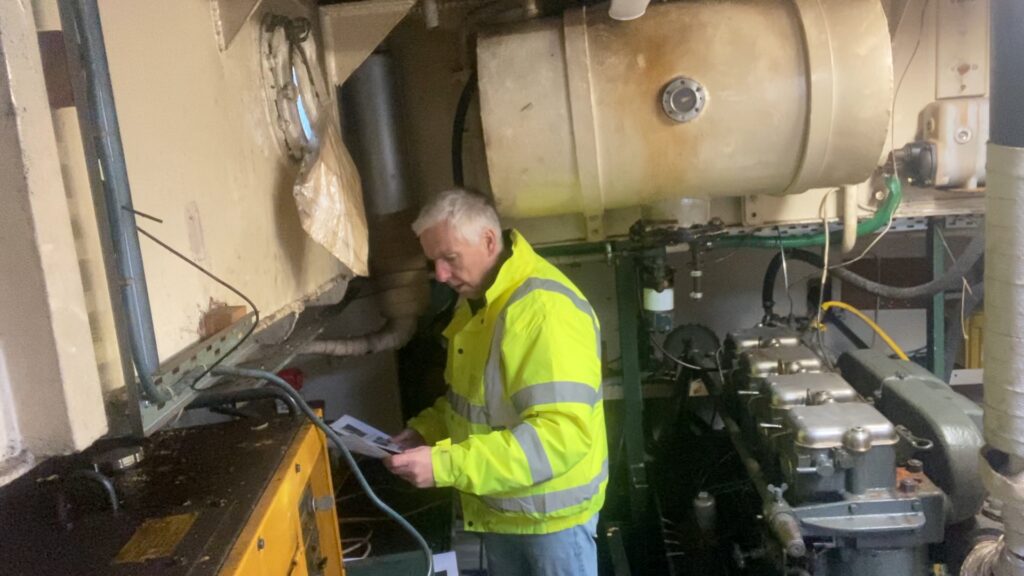
We initially moved Iris and Bream to Acton Bridge for practical reasons. I wanted somewhere that I could move things on and off the boats, as well as between them, and this was ideal. A car can be brought right next to the river here, and I’d taken full advantage of that over the past few weeks.
The plan was always to move her onto a mooring a short way up river from here, and my first step towards this was to take Bream to explore that location, which I did on 3rd February. Like most of the Weaver, there is a hard edge up to water level, but in this spot Mike, who owns the site, had build a couple of landing stages on top of this, when he kept his boats here some years ago. At present there is one other boat here.
The idea of the landings is that you get easy access to and from the boat, but also when the river is in flood, the boat can’t ride over the edge, which is hugely important. The landings do need some TLC, having not been used in years, but they would serve the purpose. I didn’t have too much difficulty getting Bream into the space, but didn’t moor up as there was no particular need to.
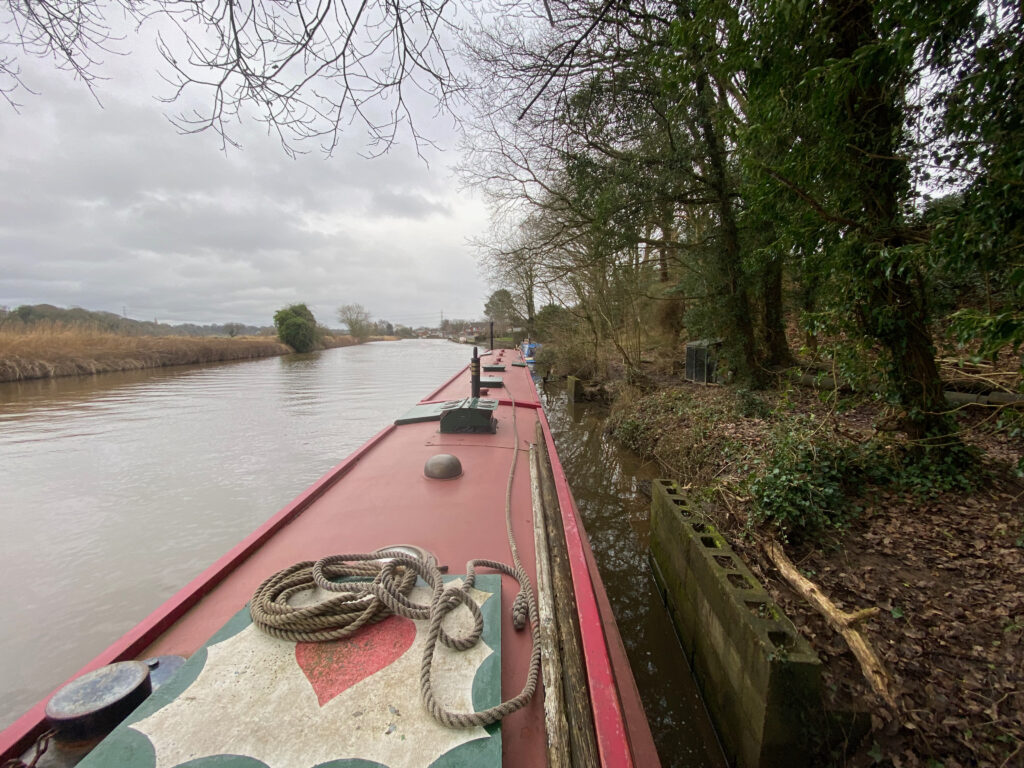
What I learned was that the downstream end of the mooring had quite a few branches which would be low enough to get in the way of Iris, and there was one branch in the water at the upstream end that would need to be removed to get the bow close to that landing, but it looked fine overall.
When I later spoke to Mike, I asked whether it was feasible to create a new mooring slightly further along. There is quite a bit of vegetation there at the moment but it is not overlooked by trees, so would be better for both light and specifically the solar panels, which I intend to make best use of. His suggestion was to moor at the existing spot, then explore that area from the bank at some point. New landings would need to be built after clearing the vegetation so it’s not a trivial task.
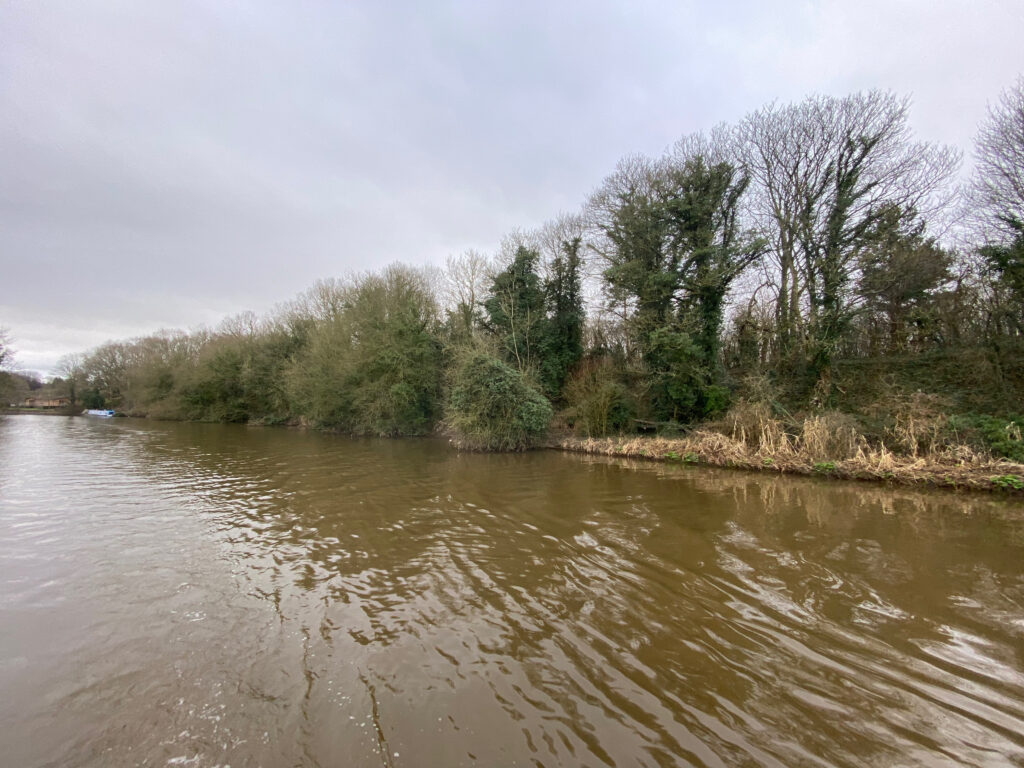
A small regret from when I bought Bream is how little record I have of the first couple of days. Kayty took some photos of the lorry move and I shot some video of that day (which was lost before I’d even seen it) but we took no photos at all until I think the third day out. I was determined to have a record of this day, so filmed as much as I could. I’ll share a link to it at the end of this post.
I’d been through my home-made guide book a few times before doing it for real, so was reasonably sure of what needed to happen, but inevitably it didn’t (quite) go perfectly. The engine start went as well as it possibly could, barring me momentarily freezing (I think in shock!) as she turned over when I should have been dropping the compressors, but it wasn’t a problem and she was up and running.
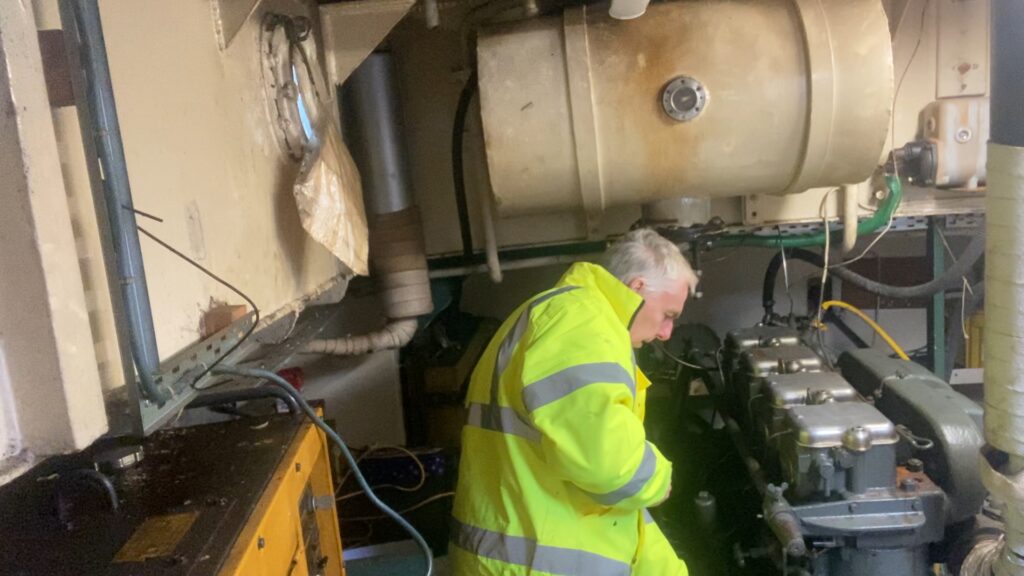
That moment of carelessness could have scuppered the day though, as I took enough pressure out of the air cylinders that I wouldn’t have got a second go at it, had I needed to. The compressor is powered from the Robin generator and that is misbehaving, so I wouldn’t have been able to recharge the system straight away.
My second mistake came as I moved Bream. I’m in the habit of using the centre line to do everything, which is fine on a canal but on the river the bow line should ALWAYS be the last one untied. I took the stern line off first, then the bow line and immediately she moved backwards, as the centre line was not tight enough to hold the boats tightly together. She started to find her way around the stern of Iris and before I could react she was nose 15 feet out across the river with the stern against the bank. The centre line was so tight and the river flow, whilst gentle was sufficient that if I’d released it Bream would be on her way downriver before I could get back on board. Thankfully a passer-by came to my aid, allowed me to get back on board then releasing the line. I’m really not sure what I would have done on my own, probably taken a knife to the centre line.
The centre line shouldn’t really have been there in the first place, but I’d added it a couple of weeks earlier when we had huge gales and she was bouncing around more than I was comfortable with one night.

Now it was time to move Iris. This where I realised that whilst I had steered the boat when I came down from Northwich with Matt, I’d not put her into gear before. There is a definite knack to both forward and reverse. I managed to get her to pop out of gear in both directions within the first few minutes.
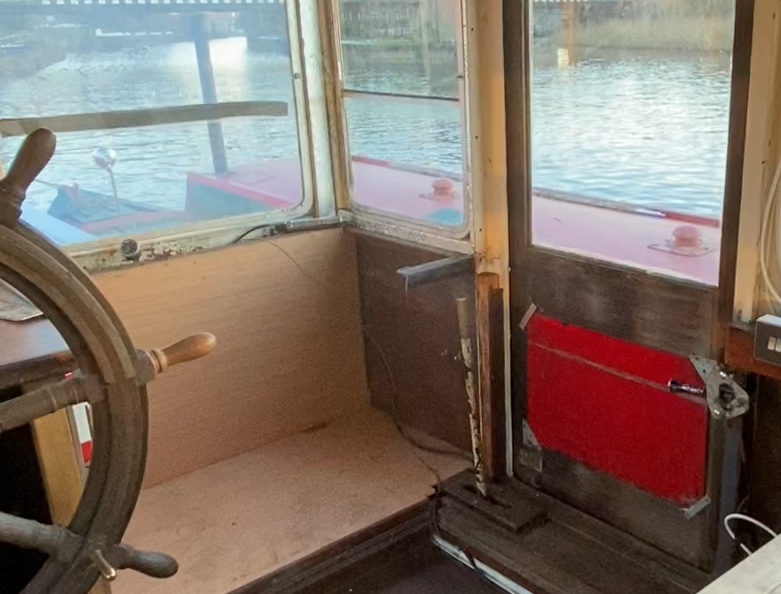
I took my time moving up to the new mooring, getting the feel for her, and for the river. When I arrived, I soon realised that the river, whilst much calmer than it had been earlier in the week was too lively for me to moor her up single-handed. I could throw a line to the bank at the bow but she would have moved too far back by then for me to jump off. I had a couple of goes at different angles but didn’t get close enough to give it a proper go. With a crew member it would have been easy as I could hold her in place with the engine but I wasn’t going to chance it.
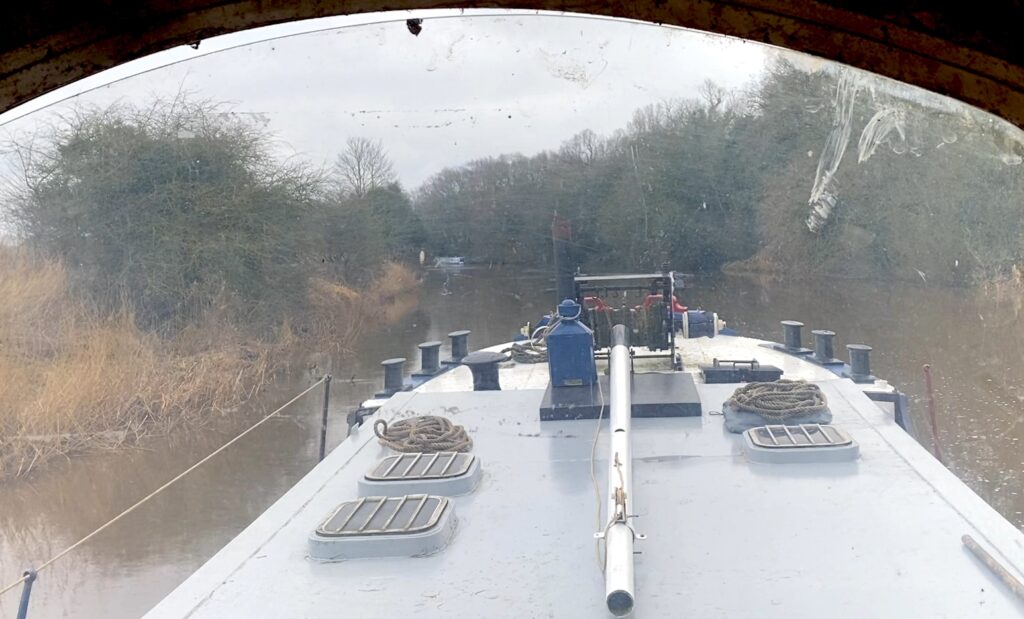
Instead I decided a run up to Saltersford and back would be a better plan. I had No problems turning her, though did struggle to keep track of the rudder position as I was manoeuvring. Not being able to see that from the steering position is something I need to give a bit of thought to, though I do have a couple of ideas, markings on the steering cables being the obvious one, as they are visible down the inside of the wheelhouse.
As I winded a second time at Dutton locks, I realised that the water cooling pump had gone off. A quick check confirmed that the mains electric had gone off. I dived into the engine room and switched off the central heating then reset the inverter. That brought it back to life and the engine temperature came back to normal.
The picture at the top of this post shows the one other boat I saw all day, just after winding for the second time.
Back at Acton Bridge, my first experience of mooring up. Even at this much more accessible site it was quite a challenge. Iris is a very heavy lump (over 51 tons) and getting her into the right spot with a rope is a non-starter (I tried and she wasn’t having it!) Thankfully the winch is available to do the job.
Quite enough of an adventure for a first trip. From engine start to stop was over 5 hours. The video below is about 11 minutes long and tells the story as it happened.
